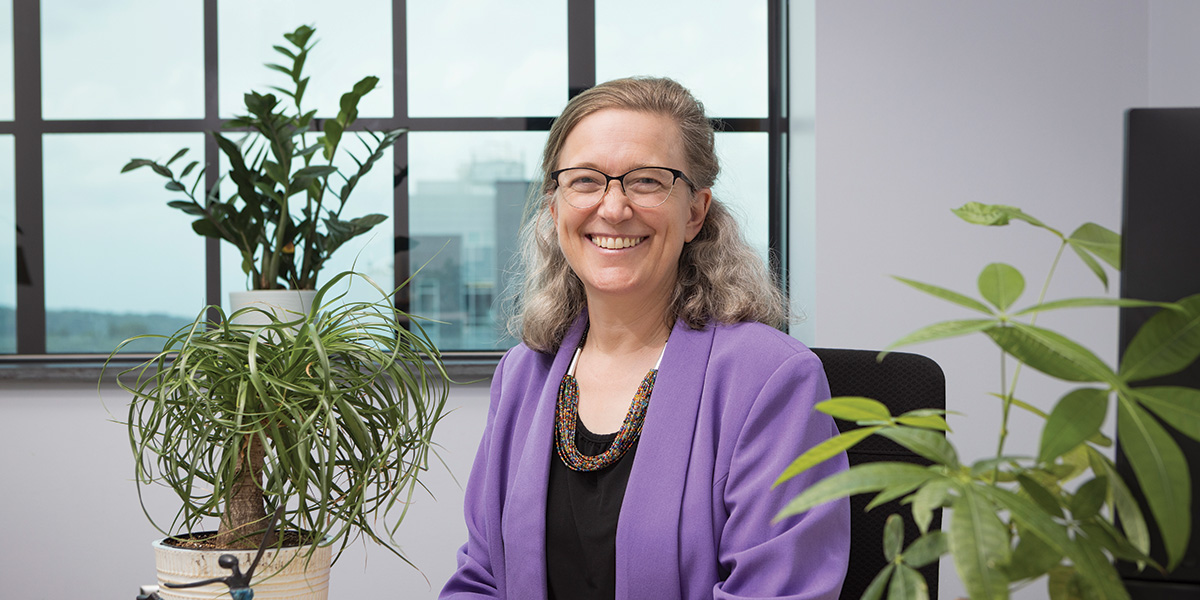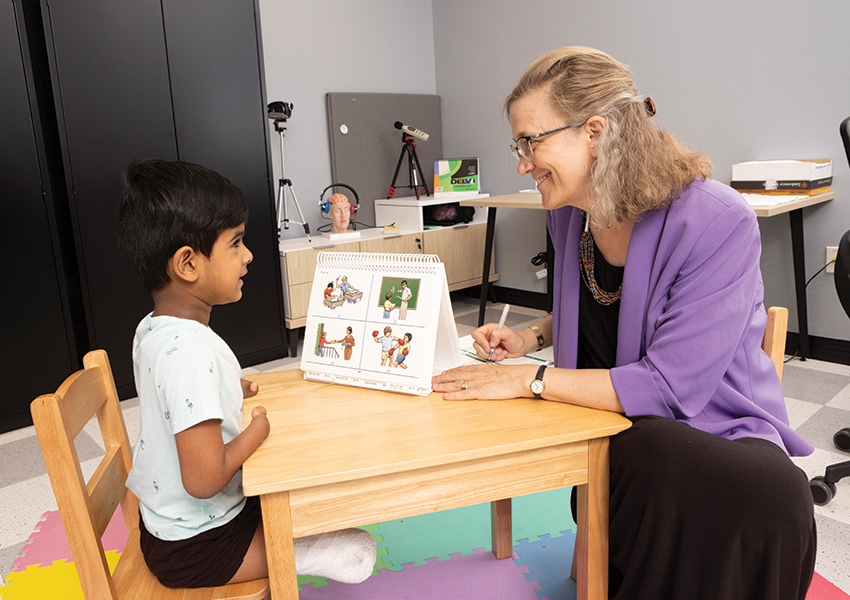Finding the right words: Associate Professor Dawna Duff researches word learning
NIH-funded research explores how children with dyslexia and developmental language disorder can build their vocabulary

“I am a fearsome monster!” Dawna Duff’s young son crowed as he ran through the house.
Now, when have I ever heard that word spoken aloud? she wondered and realized that she hadn’t.
While atypical for conversation, “fearsome” appears in children’s books, which underscores the importance of reading to children. Research shows that children’s literature contains a wider variety of words than conversation — even conversations between college graduates, notes Duff, a Decker College associate professor of speech and language pathology who researches word learning.
“In conversation, we don’t use as wide a variety of words as we do in text,” Duff explains. “If children have more books read to them, they will have an advantage because there are words in books that don’t appear very often in conversation but do in literature.”
For children with dyslexia and developmental language disorder, building essential vocabulary can be a fearsome task. To that end, Duff and Suzanne Adlof, an associate professor at the University of South Carolina, are researching word learning in these populations. Their project is funded by the National Institutes of Health.
While dyslexia is a well-known condition, developmental language disorder is not. Essentially, they are mirrors of each other: People with dyslexia have difficulty reading words but understand them when spoken. Those with developmental language disorder have difficulty understanding and using spoken language; when it comes to reading, they may be able to read aloud but can’t process what those words mean.
“It’s actually really common; around 7 to 10% of children have this condition,” Duff says. “There are a lot of children in schools who are struggling and don’t receive the support they need.”
The two conditions often coincide: If a child has one, there is a greater chance of having the other when compared to the general population. While previous research hasn’t teased the disorders apart, Duff’s current study does just that. The researchers look at typically developing children, those with either dyslexia, developmental language disorder or both, and how they acquire vocabulary.
They focus on children in the second grade, although they will assess the subjects’ word acquisition again in the fourth grade. Because children with language disorders tend to go unrecognized, Duff and Adlof will first conduct classroom screenings for reading and language difficulties.
The study will consider the different aspects of word learning — meaning and sound — and employ various strategies to determine what works. Children will learn some words through the familiar flash-card system; for others, they will watch a short video cartoon that introduces words within the context of a story.
“We want to know: Does an engaging story help, or does it get in the way?” Duff says. “The answer is intriguing: It helps, but not always. We’re looking at the story context’s effect over time and the number of times a child is exposed to the word.”
Repetition is crucial for vocabulary acquisition, but how much? To figure that out, the researchers will expose some children to a new word 18 times and others 36 times, then compare the results.
Duff and her team also measure what children learn in various ways, including asking for definitions and having children draw a picture connected to the new word they have learned. This could be especially important for children with language disorders, who find it difficult to show what they know using words.
“We’re hoping to come up with a better understanding of developmental language disorder and dyslexia and how they affect our ability to learn words,” Duff says. “We hope that we will be able to come up with practical information for speech-language pathologists and teachers to help these children learn words because vocabulary is critical to academic success.”
Predictor and gatekeeper
Brain differences aside, Duff acknowledges that not all children are exposed to the same number of words before they get to kindergarten, sometimes due to language-poor environments.
The gap can be significant; in a previous study, Duff found that a child who is one standard deviation below the mean is missing about 1,300 word families, including basic words and their variants.
Unfortunately, school alone doesn’t fix the problem; research shows that children behind in their vocabulary during kindergarten continue to have academic problems in the 10th grade. And because standardized tests include a vocabulary component, young people who graduate high school without an adequate store of words face limited life opportunities.
“Vocabulary becomes a predictor of success, but also a gatekeeper,” Duff acknowledges.
The good news for language learners of all ages: Vocabulary can grow throughout life.
Duff recently received a second NIH grant for another study: how children learn the meanings of words when they’re not told what those meanings are — how most of us acquire vocabulary.
“There is no point at which you are no longer able to learn vocabulary,” Duff says.

